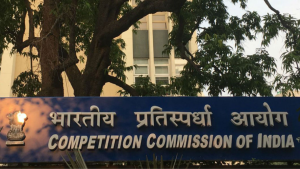

How Effective Are Commercial Courts?
- /
- Articles and Blogposts /
- How Effective Are Commercial Courts?
Recently, the Chief Justice of India, N.V. Ramana, bemoaned the lack of special infrastructure for commercial courts in India and their failure to reduce pendency. The vision behind the Commercial Courts Model remains unrealized because of myopic motivations and inconsistency in its utilization across the country.
The primary impetus behind the establishment of the commercial courts in India was the improvement of India’s ranking in the Ease of Doing Business Report released by the World Bank. In 2014, the World Bank Report ranked India a dismal 186th out of 189 countries in the category of “enforcing contracts”. The Economic Survey 2018-19 identified India’s inability to resolve legal disputes as ‘arguably the single biggest constraint to ease of doing business in India.’ In 2015, the Law Commission Report recommended the establishment of a system of commercial courts, and the Commercial Courts Act was passed in the same year. This legislation contributed to the remarkable improvement of India’s overall rank in the Ease of Doing Business index from 142 in 2014 to 63 in 2019.
What is special about Commercial Courts?
Commercial Courts are set up by the state government in consultation with the relevant High Court and can be established at the sub-district, district and state level. They are designed to settle commercial disputes faster and with better quality of adjudication. The Act enables these courts to depart from the traditional court process prescribed by the Code of Civil Procedure (CPC) and follow a more streamlined and time-bound procedure for hearings. Commercial Courts are also empowered to impose exemplary costs on parties that do reveal all necessary documents at the required time. The Act mandates time-bound oral submissions, time-bound judgment delivery, and concise written submissions, features missing or poorly enforced under the CPC.
An innovative feature of these courts is that they are required to conduct periodic “case management hearings”to apportion time for the various stages of the hearing to enable all parties, witnesses and the judges themselves to achieve the timelines set by the Act. The High Court of every state is required to publish monthly statistical data regarding the volume, pendency and average disposal time of all cases in Commercial Courts in the state.
How far has the Model been Implemented
The average level of compliance with the requirement to publish monthly statistics across High Courts is far from satisfactory and varies greatly across states. Some High Courts like the High Court of Gujarat have consistently maintained monthly data regarding the number of cases pending, instituted and disposed off regularly since July 2018. Meanwhile, the High Court of Madras has disclosed this data for 52.5% of this time, subordinate Commercial Courts in Uttar Pradesh have disclosed this data for 82.5% of this time, the commercial division of the Allahabad High Court has disclosed this data 52.5% of this time, subordinate Commercial Courts of West Bengal disclosed this data after July 2021 for the entire duration of their existence and the commercial division and commercial appellate division of the High Court of Calcutta have not disclosed any such data at all.
The data, when published, is often incomplete. For example, despite the high percentage, the statistics for the subordinate courts in Uttar Pradesh are presented in aggregate without specifying individual statistics for each court. With a few exceptions, most Commercial Courts do not record the average number of days for disposal of the cases at all – a key metric to assess the success of their functioning.
The Commercial Court Model was set up to create a system of “hi-tech” fast track courts with complete digitization of records, e-filing of documents and video conferencing facilities. While it was initially envisaged for a few commercial divisions of High Courts, the 2018 amendment to the Act has led to the formation of several commercial courts within a state, with some states like Tamil Nadu and Punjab setting up a commercial court in each district. The installation of the required technical infrastructure at all these courts is a significant challenge, both in terms of resources and creating behavioural changes amongst judges, lawyers, litigants and witnesses who are unaccustomed to virtual proceedings and documentation.
Commercial Courts were envisaged as an avenue for complex commercial disputes to be adjudicated by judges familiar with the nuances of commercial laws. However, the Act does not lay any specific criteria for judges in Commercial Courts apart from requiring that the judges be “persons having experience in dealing with commercial disputes”. Regular civil judges are often posted in Commercial Courts on a rotational basis, making them no different from ordinary courts in terms of the type of judicial skills. Further, judges are often transferred making it difficult for them to gain prolonged exposure and experience in commercial matters. While there are some training programs offered by the National Judicial Academy and state judicial academies, there is a need for proactive, mandatory and continuing training in contemporary best practices and adjudication strategy for Commercial Court judges.
As observed by the Chief Justice of India, there is no clear legislative mandate to set up a separate court with its own infrastructural facilities, that are dedicated to hear commercial cases alone. As a result, a bulk of district level Commercial Courts operate out of the district courts halls with the same infrastructure wherein a civil judge acts as a Commercial Court judge for a specified number of hours a day.
Conclusion
While the World Bank has discontinued the Ease of Doing Business Report, the Indian judicial system remains saddled with high pendency and expensive litigation. The Commercial Courts Model provides a great opportunity to test streamlined court processes and technology enabled litigation management. Joint efforts by the judiciary and executive in realizing its full potential in letter and spirit is key to reforming the court system as a whole in the long run.

Anindita Pattanayak
RECENT ARTICLES


Judicial discipline or lack thereof in NCLT and NCLAT

Year in Review: NCLT and NCLAT Under the Supreme Court’s Microscope

Testing the Waters: Pre-Implementation Evaluation of the 2024 CCI Combination Regulations

-
Rule of Law ProjectRule of Law Project
-
Access to Justice SurveyAccess to Justice Survey
-
BlogBlog
-
Contact UsContact Us
-
Statistics and ReportsStatistics and Reports
© 2021 DAKSH India. All rights reserved
Powered by Oy Media Solutions
Designed by GGWP Design